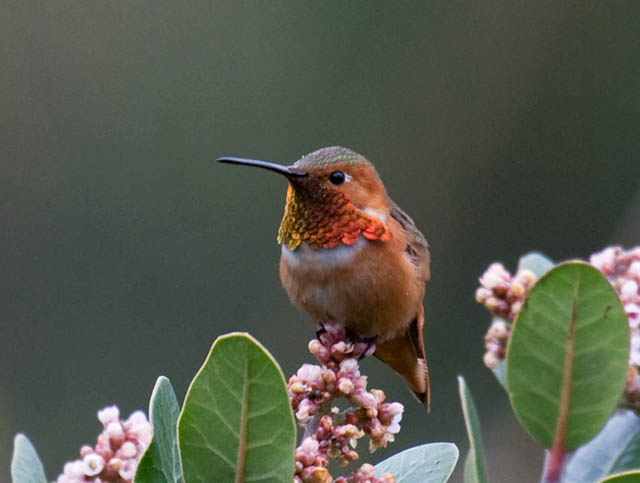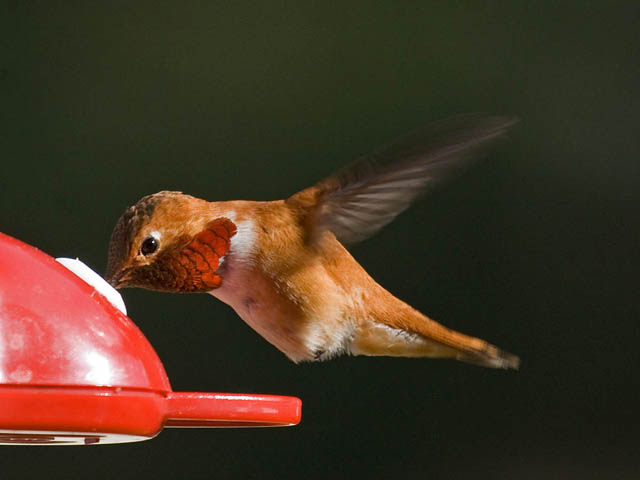Are you eagerly awaiting the return of hummingbirds to your Minnesota garden? Timing is everything when it comes to setting out your feeders.
If you’ve ever wondered about the perfect moment to welcome these tiny, vibrant guests, you’re not alone. Understanding the best time to put out your hummingbird feeders can make all the difference in attracting these delightful creatures to your yard.
This blog will guide you through the key moments to ensure your garden is ready to host these fascinating birds. Stay with us as we dive into the specifics and help you create the ultimate hummingbird haven right in your backyard.

Credit: minnesotaseasons.com
Hummingbird Species In Minnesota
Understanding the hummingbird species in Minnesota can help you decide the best time to put out your feeders. These tiny birds bring vibrant life to gardens, but not all species visit this northern state. Knowing which hummingbirds you might see allows you to prepare your yard and enjoy their presence fully.
Common Hummingbirds To Spot
The Ruby-throated Hummingbird is the star visitor in Minnesota. It’s the only hummingbird species that breeds here regularly. You might also catch glimpses of the Black-chinned Hummingbird, though it’s less common and usually just passing through.
Ruby-throated Hummingbirds are small, fast, and fiercely territorial. Their bright red throat shines brilliantly in sunlight, making them a favorite among bird watchers. If you’ve ever watched one zip around your garden, you know how mesmerizing their movements can be.
Migration Patterns
Most hummingbirds in Minnesota arrive in late April or early May. They stay through the summer, nesting and feeding on nectar and insects. By late September, they begin their long journey south to warmer climates.
Did you know these tiny birds can travel over 500 miles nonstop during migration? This remarkable feat means they need reliable food sources along their route. Putting out feeders early enough can support them during these challenging travels.
Have you noticed a sudden drop in hummingbird visits after mid-September? This timing aligns with their migration south, signaling it might be time to take down feeders. But leaving feeders out a little longer won’t harm; it can help any late travelers.

Credit: www.birdwatchingdaily.com
Ideal Timing For Putting Out Feeders
Knowing the best time to put out hummingbird feeders in Minnesota helps attract these tiny birds early. Timing matters because hummingbirds migrate and arrive at different times. Putting out feeders too soon or too late can affect their chances of finding food.
Feeding hummingbirds at the right time supports their energy needs during migration. It also helps them settle in your garden or yard. Understanding the signs of their arrival and local weather patterns is key to placing feeders at the perfect moment.
Signs Of Arrival
Watch for the first hummingbird sightings in your area. These birds usually arrive in late April to early May in Minnesota. Look for quick flashes of color near flowers or feeders.
- Listen for a soft humming sound in the air.
- Notice increased activity around flowering plants.
- Spot small, fast-moving birds near your home.
Birdwatching groups and local reports can also provide updates. These clues help decide the right time to put out feeders.
Weather Considerations
Check local weather trends before setting up feeders. Hummingbirds avoid cold and rainy weather. Warm, sunny days encourage their arrival.
- Wait until nighttime temperatures stay above freezing.
- Look for stable weather without late frosts.
- Be ready for sudden weather changes in spring.
Patience pays off. Putting out feeders during mild weather keeps the nectar fresh and safe for hummingbirds.
Setting Up Feeders Correctly
Setting up hummingbird feeders correctly is key to attracting these tiny visitors and keeping them safe. It’s not just about hanging a feeder anywhere; the right placement and care can make all the difference. Let’s look at how you can create the perfect hummingbird haven in your Minnesota backyard.
Choosing The Right Location
Select a spot that offers some shade during the hottest part of the day to prevent the nectar from spoiling quickly. Hummingbirds also prefer areas near natural shelter like trees or shrubs where they can rest and hide from predators.
Think about visibility—you want to see your feathered guests up close, but avoid placing feeders in busy, noisy areas. Have you noticed how hummingbirds tend to avoid open, exposed spaces? Mimic their natural preferences by hanging feeders about 4 to 6 feet off the ground.
- Avoid placing feeders too close to windows to prevent collisions.
- Keep feeders away from areas with heavy pesticide use.
- Consider putting multiple feeders at different locations if you have a large yard.
Feeder Maintenance Tips
Regular cleaning is crucial to keep your hummingbirds healthy. I learned this the hard way when I noticed fewer visits—turns out, mold had started growing inside the feeder.
Clean your feeders at least once a week using hot, soapy water and a bottle brush. Rinse thoroughly to remove any soap residue, which can be harmful to hummingbirds.
Change the nectar every 2 to 3 days, especially during warm weather, to prevent fermentation. If you see any signs of cloudiness or mold, replace the nectar immediately.
- Use a solution of 1 part white vinegar to 4 parts water for a deeper clean.
- Never use bleach—it leaves toxic residues.
- Store extra nectar in the fridge to keep it fresh longer.
Are you ready to see more hummingbirds visit your feeder? With the right spot and proper care, you’ll create a thriving environment that keeps these tiny birds coming back day after day.

Credit: www.birdwatchingdaily.com
Feeding Tips For Minnesota Hummingbirds
Feeding hummingbirds in Minnesota requires attention to detail and a bit of timing. These tiny birds depend on your feeders as a vital food source, especially during migration and colder months. Offering the right nectar and avoiding common pitfalls can make your backyard a hummingbird hotspot that supports their health and energy.
Best Nectar Recipe
Creating the perfect nectar is simple and important. Use four parts water to one part white granulated sugar. Boil the water first to dissolve the sugar completely, then let it cool before filling your feeder.
Skip using honey, artificial sweeteners, or red dye. These can harm hummingbirds or disrupt their digestion. Fresh nectar should be replaced every two to three days, especially in warm weather, to prevent fermentation and mold.
Avoiding Common Mistakes
- Don’t overfill feeders.Too much nectar sitting for days can spoil quickly and become dangerous.
- Clean feeders regularly.Wash with hot water and a bottle brush every few days to keep mold and bacteria away.
- Avoid placing feeders in direct sunlight.This heats nectar faster, encouraging spoilage.
- Don’t add red dye to nectar.It’s unnecessary and potentially harmful. Use feeders with built-in red parts instead.
- Be patient.Sometimes it takes days or weeks for hummingbirds to discover your feeder. Keep it up and stay consistent.
Have you noticed how hummingbirds quickly learn to return to a clean, fresh feeder? This simple care makes a big difference in attracting and keeping these energetic birds around your Minnesota home.
Monitoring Hummingbird Activity
Monitoring hummingbird activity helps you know the best time to put out feeders in Minnesota. Watching their behavior gives clues about their arrival and feeding needs. This way, you avoid wasting nectar or missing their visit altogether. Paying close attention to hummingbird signs makes feeding more effective and rewarding.
Tracking Visits
Start by observing your yard daily for hummingbird sightings. Early signs include quick flashes of green or tiny bird movements near flowers. Note the first day you see hummingbirds and how often they return. Keep a simple journal to record dates and times. This tracking helps predict their regular feeding schedule.
Adjusting Feeder Timing
Use your visit records to decide when to place feeders outside. Put feeders out a week before the first sighting to prepare for their arrival. If visits increase, keep feeders full and clean. When visits slow down, reduce nectar or remove feeders to avoid attracting other insects. Adjust feeder timing to match hummingbird patterns for best results.
Frequently Asked Questions
When Should I Put Out Hummingbird Feeders In Minnesota?
Put out feeders in late April or early May. This timing matches hummingbirds’ spring migration to Minnesota. Early feeders attract hummingbirds and support their energy needs.
How Long Should Hummingbird Feeders Stay Up In Minnesota?
Keep feeders up until late September or early October. Hummingbirds migrate south as temperatures drop. Removing feeders too early may leave birds without food.
What Is The Best Location For Hummingbird Feeders In Minnesota?
Place feeders in a shady, sheltered spot near flowers. Avoid direct sun and strong winds. This location keeps nectar fresh and attracts more hummingbirds.
How Often Should I Clean Hummingbird Feeders In Minnesota?
Clean feeders every 3-5 days in warm weather. Frequent cleaning prevents mold and bacteria growth. Clean feeders keep hummingbirds healthy and safe.
Conclusion
Hummingbirds usually arrive in Minnesota by late April. Putting feeders out a little before helps them find food fast. Keep feeders clean and filled with fresh nectar. Watch for their arrival signs like flowers blooming. Feeding early can support these tiny birds during migration.
Enjoy their quick visits and bright colors nearby. Patience pays off—hummingbirds will come back each year. Your timely feeder helps them stay strong and healthy. Give nature a small helping hand this spring.

